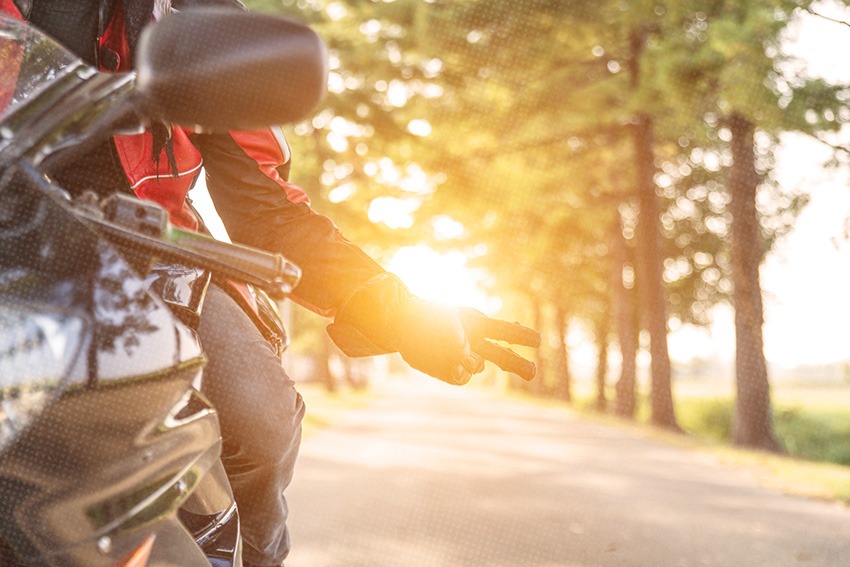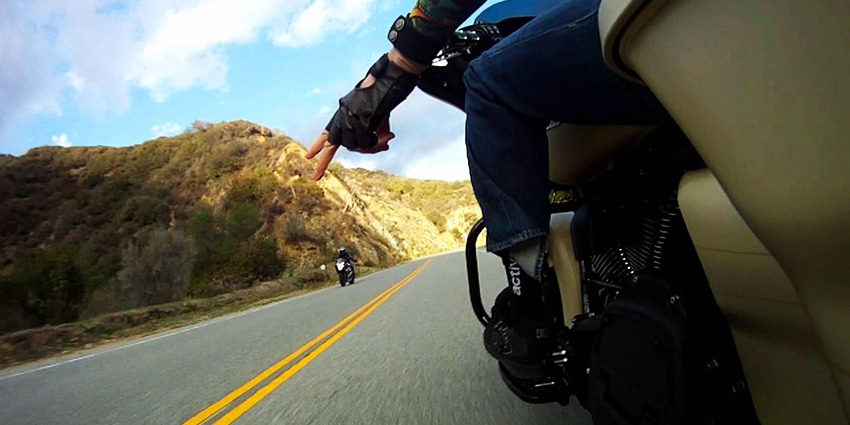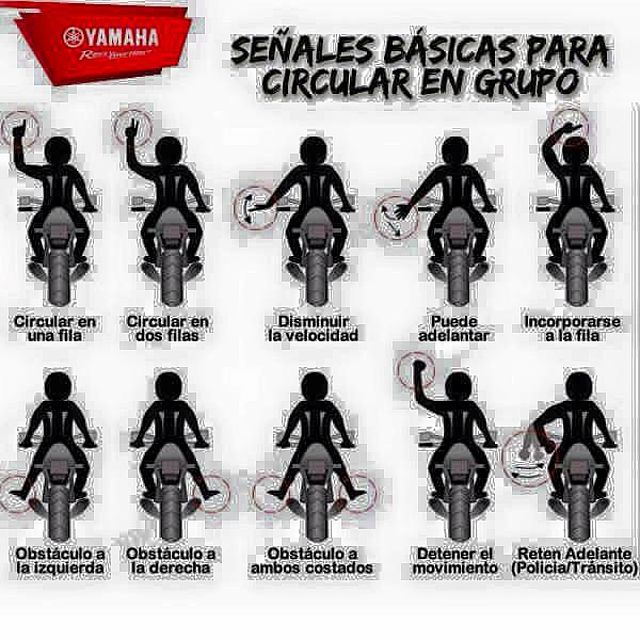There are two types of bikers. Those who love riding alone. And those who love to ride alone, but also enjoy the experience of group riding. If you have not tried the latter, we recommend it with the certainty that if you do, you will repeat experience.
Orchestrating routes, sharing roads, is how the strongest bonds of camaraderie are created between bikers. That is why it is something that we believe you cannot miss. Of course, to get the most out of each trip in company, you will have to take tables ... There is always a first time for everything. Also to ride a motorcycle in a group.

And before starting engines, it is essential to know the gestural code of a motorcyclist to circulate in a group, a stipulated language of gestures, which, when you ride along with more bikers, will help you communicate with them, providing everyone with greater safety and tranquility in driving.
That in your group you all have intercoms, better than better. It all adds up! No, well do not worry because today we collect the most used biker signals, which will surely pave the way for you, especially if you add a wide squad.
Before listing them, it is worth remembering that it is necessary to have a leader or a captain to coordinate the road, as well as an order of positions, something that will greatly facilitate the behavior of the group on the road. Now, stay with these gestures.
Turn to the left: Stretch the left arm outwards with the palm of the hand facing down.
Turn to the right: Bend your elbow at a right angle, clench your fist and aim it up to the sky.
Stop: Bend your arm 90 degrees, keeping your hand open and pointing your fingers towards the path.
Accelerate: Extend the arm and move the palm of the hand up.
Reduce speed: Stretch your arm forward and move your palm toward the road.
Road hazard: To warn of a traffic jam or an obstacle in the road, it is indicated with the left arm, while if the danger is on the right or on the shoulder, such as gravel or a hole, it is pointed with the right foot.
Comfort stop: Move the arm to the left by shaking the fist up and down with short movements.
Refresh stop: Make a thumbs up with the left hand and mark a gesture towards the mouth as if we were going to drink with a straw.
Emergency stop: Fist raised with the left arm at right angles.Rest stop: Place the hand on the side of the head and tilt it, making the sign of sleeping. Mostly it is used on long trips.
“Follow me”: Extend the arm forward and at the elbow with the palm facing out.
Warning lights: Make the flickering gesture with the left hand, opening and closing the fist. It is mostly done to warn another driver that he left the turn signal on.

Refueling: Point the fuel tank with your index finger or thumb down.o.
Willingness to be advanced: Bring the left hand from back to front, to indicate that another pilot takes the head of the group or forward his position because we are going at a lower rate.
Police: Slap the upper part of the helmet with the palm of your left hand or bring your arm up in a circular motion with your index finger.
Motorcycles in a row or row: Extend the index finger of the left hand and bend the arm up pointing to the sky indicating the one. It occurs on stretches of roads with many curves, where it is necessary to have the full width of the lane to draw them correctly.
Motorcycles in a row of two or in parallel: Bend the left arm at the elbow and aim at the sky with the index finger and the middle one to indicate the two. It should be noted, however, that in Spain it is prohibited to circulate in parallel.
The best way to go in a group is the zigzag or spike formation, with one biker behind another, inside the same lane, but alternating the position to the left and right, since it is the one that facilitates maintaining the safe distance.
There are also other common biker signals that should be known whether we circulate alone or in a group, especially the following:
Helmet on the ground: It is a sign that indicates breakdown or accident, so if we find it on the road, we have a moral obligation to assist the pilot if no one has done so before us.
 Bursts: Depending on the situation, it can have several meanings: greeting to another biker; Notice to another vehicle to let you know that you are wearing the long lights and dazzle the one that comes from the front; or to warn of any maneuver, such as overtaking.
Bursts: Depending on the situation, it can have several meanings: greeting to another biker; Notice to another vehicle to let you know that you are wearing the long lights and dazzle the one that comes from the front; or to warn of any maneuver, such as overtaking.
V fingers: Biker greeting.
Most of these signals are very intuitive, right? Almost all are manual and, if executed correctly, accompanied by a clean and appropriate body language, they are also highly effective. Keep them always present!




